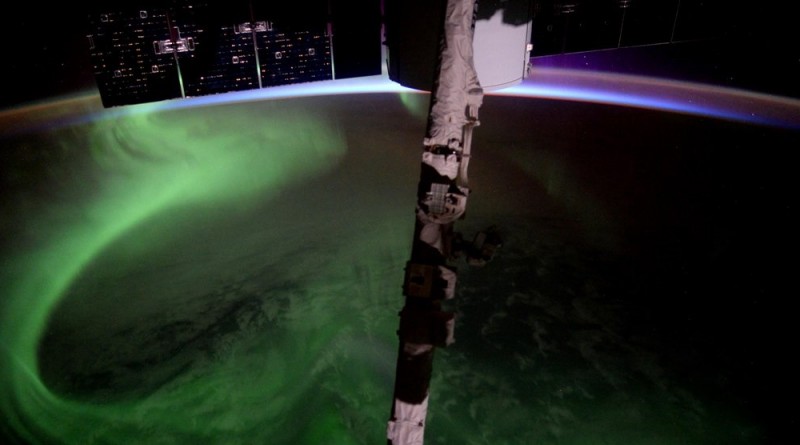ISS Operations Update – April 15, 2016

Experiments:
Cell Mechanosensing 3 -Microscope Observations [The Cell Mechanosensing study aims to identify mechanisms of gravity sensing on a cellular level using skeletal muscle cells in order to help the development of countermeasures to muscle atrophy.]
Ocular Health – Cardiac Echo & Ultrasound 2 Exams [OH is a human physiology study. Its full name is Prospective Observational Study of Ocular Health in ISS Crews. “The Prospective Observational Study of Ocular Health in ISS Crews (Ocular Health) protocol aims to systematically gather physiological data to characterize the Risk of Microgravity-Induced Visual Impairment/Intracranial Pressure on crewmembers assigned to a 6 month ISS increment,” the NASA experiment overview said. It is known that some (not all) astronauts in orbit experience changes in visual acuity (visual clarity) and intraocular pressure as a result of fluid shifts within the body as it is subjected to microgravity. About 20% is astronauts flying to ISS have reported these kinds of changes. Test subjects will undergo pre-flight, flight and post-flight testing of their eyes using a variety of techniques.]
Multi-Omics Saliva Sampling & Questionnaire [Multi-Omics studies the effect of the space environment and prebiotics on astronauts’ immune function.]
Cognition [Cognition, also known as Individualized Real-Time Neurocognitive Assessment Toolkit for Space Flight Fatigue uses a battery of tests to measure how spaceflight-related physical changes (microgravity, lack of sleep quality, diet) can affect the cognitive performance of humans during long-duration space flights. The experiment consists of ten brief computer-based tests that cover a range of cognitive functions and deliver immediate feedback on current and past results. A good neurocognitive function for effective performance during space missions makes an investigation of sleep and fatigue in space an absolute necessity. The testing operation consists of a sleep questionnaire and subjective evaluations at the beginning followed by the ten tests that focus on: sensor-motor ability, visual object learning and memory, attention and working memory, abstraction, spatial orientation, emotion recognition, abstract reasoning, complex scanning & visual tracking, risk decision making, and vigilant attention and psychomotor speed.]
Habitability Experiment Ops [Assessment of International Space Station Vehicle Habitability will see teams on the ground study video of the behavior of crew members within the habitable environment of ISS while the crew fills out questionnaires and collects video of areas of interest in order to provide an assessment of the habitability of ISS in its current state for a one-year mission. Results will be used to develop spacecraft with improved habitability properties to allow crew members to optimally utilize the onboard space.]
Wet Lab RNA SmartCycler Hardware & Software Prep [The Wetlab RNA SmartCycler provides real-time quantitative gene expression analysis aboard ISS, enabling genomic studies in the unique space environment.]
Rodent Research 3 (RR-3) Video Setup & Water/Food Check [Rodent Research 3, named after the sponsoring company Eli Lilly and Co., will conduct a close study of myostatin inhibition for the prevention of sekeletal muscle atrophy and weakness in mice during long-duration spaceflight. A rapid loss of bone and muscle mass is observed in astronauts during spaceflight, especially to the legs and spine at rates similar to atrophy in people with muscle-wasting deseases on Earth. The study makes use of mice as a model organism to examine the response to certain drugs preventing muscle or bone loss.]
Identification – Micro-Accelerometer Data Download [The Identification Payload records structural dynamics data inside the individual modules of the Russian Segment to provide structural data to improve spacecraft design.]
Seismoprognoz Data Download [Seismoprognoz will measure the temporal and spatial scales of ionospheric disturbances caused by seismic phenomena in order to develop algorithms to detect plasma features of earthquakes and anthropogenic impacts from space-based instruments. The payload consists of an external monoblock, a Data Control and Acquisition Module, an attachment kit, flash memory and associated cables and connectors.]
WinSCAT Experiment Session [MedOps WINSCAT (Spaceflight Cognitive Assessment Tool for Windows) is a computer based psychological evaluation that investigates concentration, verbal working memory, attention, short-term memory, spatial processing, and math skill of humans exposed to microgravity for extended periods of time.]
MAI-75 – Hardware Activation and Checkout[MAI-75 = Space Devices and Modern Technology for Personal Communication. The MAI-75 test evaluates a general methodology for video image transfer from ISS via amateur radio communication channel (SSTV) and data reception at the MAI data and processing center.]
Other Activities:
Nominal Inspections/Servicing Tasks (Morning Inspection, Caution & Warning Panel Check, Sozh System Maintenance) (Russian Crew)
Checkout of MRM2 Manual Circuit Breakers
Russian Toilet Facility Maintenance
BD-2 Treadmill Maintenance
Progress MS-01 Liquid Waste Transfers
HAM Radio Session
EarthKAM Battery Swap

